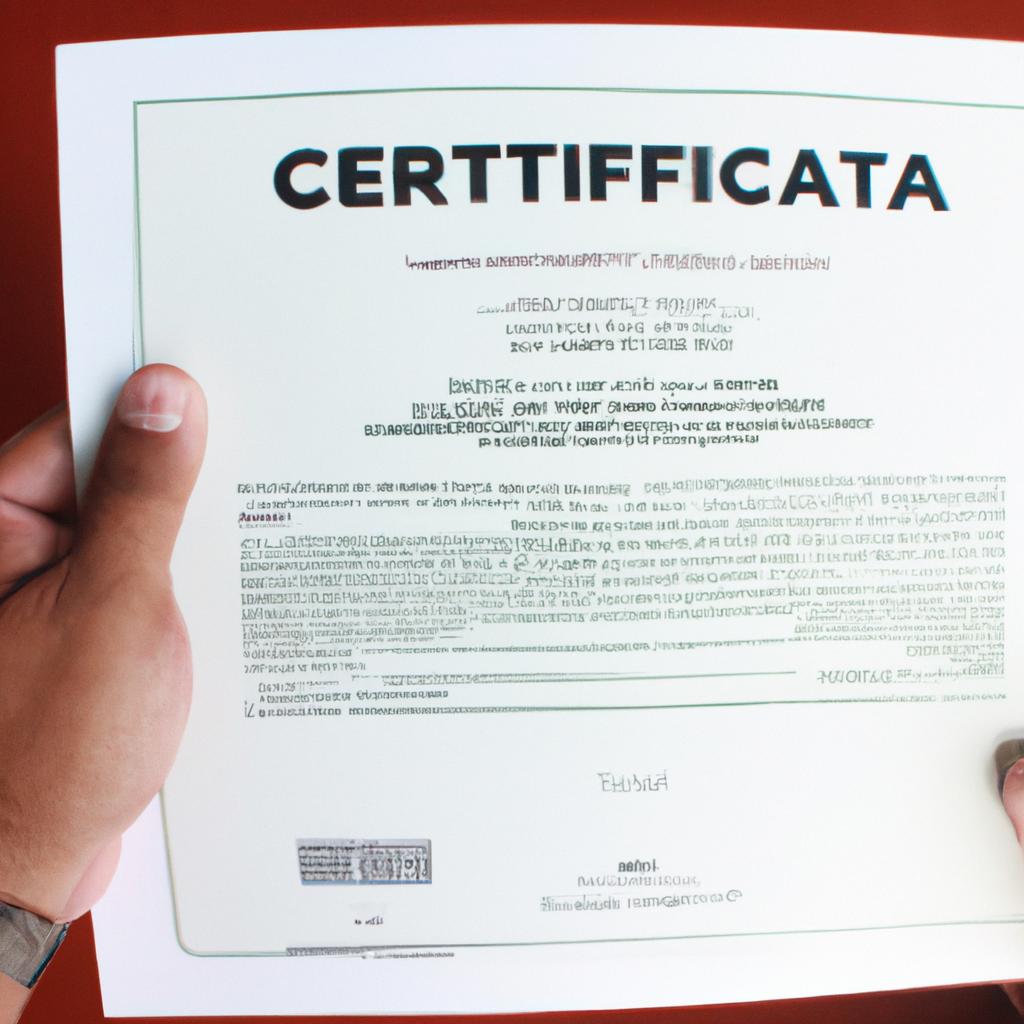Server-side scripting is a crucial aspect of web server security, with the potential to enhance protection against various cyber threats. By offloading processing tasks from client devices to the server, this practice reduces the attack surface and minimizes vulnerabilities that can be exploited by malicious actors. For instance, consider a hypothetical scenario where an e-commerce website does not implement server-side scripting properly; in such a case, sensitive customer information may be exposed to unauthorized individuals seeking to exploit weaknesses within the system. Therefore, understanding the importance of effective server-side scripting techniques is essential for safeguarding user data and maintaining the overall integrity of web servers.
The primary objective of this article is to explore how server-side scripting contributes to enhancing web server security. It will examine the benefits of employing this technique and highlight its role in mitigating potential risks associated with online platforms. Furthermore, it will delve into real-world examples and case studies that demonstrate instances where inadequate implementation or lack of proper server-side scripting has resulted in significant breaches and compromise of sensitive information. Through comprehensive analysis and discussion, readers will gain insights into best practices for implementing robust server-side scripts, enabling them to bolster their web server security measures effectively.
Understanding Server-Side Scripting
Server-side scripting is a fundamental aspect of web development that plays a crucial role in enhancing the security of web servers. By executing scripts on the server side, rather than on the client side, it enables dynamic content generation and interaction with databases, while also protecting sensitive information from being exposed to potential threats. To illustrate this concept, consider a hypothetical scenario where an e-commerce website allows users to create accounts, make purchases, and store personal data securely.
To comprehend the significance of server-side scripting, it is essential to understand its key features and benefits. Firstly, server-side execution ensures that sensitive operations are performed within controlled environments. This mitigates the risk of exposing critical functionalities or confidential data to malicious entities. Secondly, by handling complex tasks such as user authentication and input validation on the server side, developers can implement robust security measures to protect against common vulnerabilities like cross-site scripting (XSS) attacks or SQL injection.
To further emphasize the importance of secure server-side scripting practices, let us examine some common vulnerabilities associated with poor implementation:
- Code Injection: Attackers exploit insecure code interpretation mechanisms to inject malicious instructions into server-side scripts.
- File Inclusion: Vulnerabilities arising from improper inclusion of external files within scripts enable attackers to execute arbitrary code or gain unauthorized access.
- Remote File Execution: When applications allow remote file uploads without adequate checks and validations, hackers can upload executable files onto servers and subsequently run them.
- Cross-Site Scripting (XSS): Poorly sanitized user-generated inputs embedded in dynamically generated pages can be exploited by attackers to execute malicious scripts within other users’ browsers.
By adhering to best practices for secure coding and implementing appropriate countermeasures against these vulnerabilities, developers can fortify their web servers against potential cyber threats. Employing techniques such as input validation, session management controls, output encoding protocols, and proper error handling significantly reduces attack vectors and strengthens the overall security posture.
Transitioning into the subsequent section about “Common Vulnerabilities in Server-Side Scripting,” it is important to gain an understanding of these vulnerabilities to effectively counteract them. By recognizing their potential impact and implementing appropriate safeguards, developers can ensure that server-side scripting remains a reliable mechanism for secure web application development.
Common Vulnerabilities in Server-Side Scripting
Case Study: Imagine a scenario where an e-commerce website, XYZ Mart, experiences a severe security breach due to vulnerabilities present in its server-side scripting. Attackers exploit these vulnerabilities and gain unauthorized access to sensitive customer data, leading to financial losses and reputational damage for the company.
To prevent such incidents from occurring, it is crucial for organizations to understand and address common vulnerabilities associated with server-side scripting. By implementing effective security measures, businesses can better safeguard their web servers against potential attacks. Here are some key strategies that can help enhance web server security:
-
Regular Updates and Patching: Keeping all software components of the web server up-to-date is essential as it ensures critical security patches are applied promptly. This includes regularly updating the underlying operating system, web server software (such as Apache or Nginx), and any other third-party libraries or plugins used within the server-side scripts.
-
Input Validation and Sanitization: Thoroughly validating user input before processing it within server-side scripts helps mitigate risks associated with injection attacks, such as SQL injection or cross-site scripting (XSS). Implementing strict validation checks and sanitizing user-supplied data significantly reduces the chances of malicious code execution on the server.
-
Secure Configuration Settings: Proper configuration of the web server is vital to minimize potential attack vectors. This involves disabling unnecessary services or modules that may introduce additional security risks. Additionally, enforcing secure communication protocols like HTTPS ensures encrypted data transmission between clients and the web server.
-
Access Control Mechanisms: Implementing robust access control mechanisms helps restrict privileges granted to users or processes interacting with the server-side scripts. Employing strong authentication methods, role-based access controls (RBAC), and least privilege principles ensure that only authorized entities have appropriate permissions to execute specific actions.
By adopting these best practices, organizations can fortify their defenses against common vulnerabilities prevalent in server-side scripting. However, it is important to note that security measures should be continuously monitored and updated to adapt to evolving threats.
Next section: Implementing Secure Coding Practices
Implementing Secure Coding Practices
In the previous section, we explored the common vulnerabilities that can arise in server-side scripting. Now, let us delve into the importance of implementing secure coding practices to enhance web server security. To illustrate this concept further, consider an incident where a popular e-commerce website fell victim to a server-side scripting attack due to inadequate implementation of secure coding practices.
Case Study:
An online marketplace found itself grappling with a severe breach when attackers exploited a vulnerability in their server-side scripting code. Due to poor input validation and lack of proper user authentication mechanisms, malicious actors were able to inject harmful scripts into the system, leading to unauthorized access and data theft. This unfortunate event highlights the criticality of adopting robust secure coding practices in order to safeguard sensitive information and maintain the trust of users.
Implementing Secure Coding Practices:
To mitigate potential risks associated with server-side scripting vulnerabilities, it is imperative for developers and administrators alike to adhere to secure coding practices. Consider incorporating the following measures into your development process:
- Input Validation: Thoroughly validate all incoming data from users before processing or storing it on the server.
- Proper Error Handling: Implement comprehensive error handling mechanisms that provide minimal information about system internals while still being helpful for debugging purposes.
- Session Management: Employ strong session management techniques such as securely generating unique session IDs and enforcing strict expiration policies.
- Regular Updates and Patching: Keep all software components up-to-date by regularly applying patches released by vendors.
Embracing these best practices fosters enhanced security posture within web servers, reducing the risk of successful attacks targeting server-side scripting vulnerabilities.
Role of Input Validation in Server-Side Scripting:
By ensuring proper input validation during server-side scripting processes, organizations can significantly reduce their exposure to potential threats. In our upcoming section on “Role of Input Validation in Server-Side Scripting,” we will explore how this crucial aspect of secure coding plays a pivotal role in fortifying web server security against various types of attacks. Let us now delve into the intricacies of input validation and its impact on overall system integrity.
Emotional Bullet Points:
- Protect valuable user data from unauthorized access.
- Safeguard systems from potential exploitation and compromise.
- Preserve the reputation and trustworthiness of online platforms.
- Prevent financial losses resulting from security breaches.
| Importance of Secure Coding Practices |
|---|
| Enhances web server security |
| Reduces vulnerability to attacks |
| Maintains user trust |
In our next section, we will explore how input validation acts as a strong defense mechanism by examining its implementation within server-side scripting processes. Through this analysis, we aim to provide you with comprehensive insights into bolstering your website’s resilience against malicious activities. So let’s dive deeper into understanding the role of input validation in securing server-side scripting environments.
Role of Input Validation in Server-Side Scripting
In the previous section, we explored the importance of implementing secure coding practices to enhance web server security. Now, let us delve into another crucial aspect of server-side scripting: the role of input validation. To illustrate its significance, consider a hypothetical scenario where an e-commerce website fails to validate user inputs during the checkout process. As a result, malicious users exploit this vulnerability by injecting arbitrary code into payment fields, leading to unauthorized access and potential data breaches.
Importance of Input Validation:
Input validation acts as a fundamental defense mechanism against various security threats arising from user-supplied inputs. By validating and sanitizing all incoming data on the server side before processing it further, organizations can mitigate risks associated with injection attacks such as SQL injections or cross-site scripting (XSS). Here are some key reasons why input validation is vital:
- Preventing code injection attacks: Proper input validation ensures that only expected and valid data is processed, thus reducing the risk of executing unintended commands or scripts.
- Safeguarding application integrity: Validating user inputs helps maintain data consistency within applications by preventing unexpected behavior caused by malformed or malicious entries.
- Protecting against cross-site scripting (XSS): Input validation plays a critical role in mitigating XSS vulnerabilities by detecting and blocking attempts to inject malicious script tags or executable code.
- Securing sensitive information: Thoroughly validating user inputs aids in safeguarding sensitive data like personally identifiable information (PII) or financial details from being exposed through insecure application logic.
To further emphasize the importance of input validation, consider Table 1 below which showcases real-world consequences resulting from insufficient or improper input validation measures:
Table 1: Consequences of Insufficient Input Validation
| Scenario | Result |
|---|---|
| Lack of email format | Failure to verify email addresses accurately |
| Incorrect length | Vulnerability to buffer overflow attacks |
| Inadequate sanitization | Exposure to cross-site scripting (XSS) |
| Failure to validate file uploads | Risk of arbitrary code execution or unauthorized access |
Incorporating robust input validation practices is essential in maintaining the security and integrity of server-side scripting. By preventing code injection attacks, protecting against XSS vulnerabilities, ensuring data consistency, and securing sensitive information, organizations can significantly reduce the potential risks associated with user inputs. In the subsequent section, we will explore another crucial aspect of web server security: securing server-side scripting frameworks.
Next Section: Securing Server-Side Scripting Frameworks
Securing Server-Side Scripting Frameworks
Enhancing Web Server Security
Case Study: The Impact of Inadequate Input Validation
In a recent cybersecurity breach, an e-commerce website experienced a significant data leak due to inadequate input validation in their server-side scripting. Attackers exploited this vulnerability by injecting malicious code into the application’s forms, allowing them unauthorized access to sensitive customer information such as names, addresses, and credit card details. This incident highlights the critical role that proper input validation plays in ensuring web server security.
Importance of Robust Input Validation
Effective input validation is crucial for maintaining the security and integrity of web servers. By validating user inputs before processing them on the server side, potential vulnerabilities can be identified and mitigated early on. Here are some key reasons why robust input validation is essential:
- Prevention of Code Injection Attacks: Properly validated input significantly reduces the risk of code injection attacks, where attackers exploit vulnerable entry points to inject malicious code into applications.
- Protection against Cross-Site Scripting (XSS): Validating user inputs helps prevent cross-site scripting attacks by identifying and sanitizing potentially harmful scripts or tags embedded within user-submitted content.
- Mitigating SQL Injection Vulnerabilities: Adequate input validation ensures that database queries are not tampered with by preventing SQL injection attacks, which manipulate query logic through carefully crafted user inputs.
- Safeguarding Sensitive Data: By validating all incoming data, particularly those containing personally identifiable information (PII), organizations can protect sensitive data from being compromised or leaked.
To better understand the significance of these considerations in enhancing web server security, refer to the following table:
| Issue | Risk | Consequences |
|---|---|---|
| Code injection | Execution of arbitrary commands | Unauthorized system access |
| Cross-Site Scripting (XSS) | Theft of sensitive information | Defacement, session hijacking, identity theft |
| SQL injection | Unauthorized data retrieval | Data corruption, disclosure of confidential info |
| Sensitive data exposure | Identity theft and fraud | Financial losses, reputational damage |
In light of the potential risks associated with inadequate input validation, organizations must prioritize implementing stringent measures to enhance web server security.
Securing Server-Side Scripting Frameworks
To mitigate vulnerabilities in server-side scripting frameworks, consider the following best practices:
- Implement a Secure Development Lifecycle (SDL): Adopt an SDL approach that includes rigorous code reviews, vulnerability assessments, secure coding guidelines, and regular patch management.
- Apply Input Filtering and Validation: Utilize frameworks or libraries that offer robust input filtering and validation mechanisms to ensure all user inputs are thoroughly scrutinized before processing.
- Utilize Parameterized Queries: Use prepared statements or parameterized queries instead of dynamically building SQL queries to prevent possible SQL injection attacks.
- Employ Web Application Firewalls (WAFs): Deploy WAFs as an additional layer of defense against common threats such as XSS attacks by applying rule-based filters for incoming traffic.
By incorporating these measures into server-side scripting practices, organizations can significantly bolster their web server security posture.
With a solid understanding of how to enhance web server security through proper input validation and securing server-side scripting frameworks, let us now explore some broader best practices for ensuring comprehensive protection in the realm of server-side scripting security.
Best Practices for Server-Side Scripting Security
With the increasing prevalence of web applications, ensuring the security of server-side scripting frameworks has become a critical concern for organizations. By implementing robust security measures, businesses can protect sensitive data and mitigate potential threats. This section explores various strategies to enhance the security of server-side scripting frameworks.
To illustrate the importance of securing server-side scripting frameworks, let us consider a hypothetical scenario: an e-commerce platform that experiences a cyber attack due to vulnerabilities in its framework. Malicious actors exploit these weaknesses to gain unauthorized access to customer information, resulting in significant financial losses and reputational damage. Such incidents highlight the urgency for organizations to prioritize server-side scripting security.
To effectively secure server-side scripting frameworks, several best practices should be followed:
- Regularly update and patch frameworks: Keeping server-side scripting frameworks up-to-date is crucial as developers frequently release updates to address newly discovered vulnerabilities.
- Implement input validation mechanisms: Properly validating user inputs helps prevent injection attacks such as SQL or code injections.
- Utilize strong authentication methods: Employing multi-factor authentication protocols enhances system security by requiring users to provide additional forms of identification beyond passwords.
- Employ access control mechanisms: Restricting access privileges based on roles and responsibilities minimizes the risk of unauthorized actions within the application.
Additionally, employing rigorous testing methodologies like vulnerability scanning and penetration testing aids in identifying any existing loopholes or flaws in the framework’s implementation. These proactive measures enable businesses to identify and rectify potential vulnerabilities before they are exploited by malicious entities.
Table 1 presents a comparison between different popular server-side scripting frameworks regarding their built-in security features:
| Framework | Input Validation | Authentication | Access Control |
|---|---|---|---|
| ASP.NET | Yes | Yes | Yes |
| PHP | No | No | Partial |
| Java Servlet/JSP | Yes | Partial | Yes |
| Ruby on Rails | Yes | Yes | Yes |
Table 1: Comparison of server-side scripting frameworks based on security features
In conclusion, securing server-side scripting frameworks is essential for safeguarding web applications and protecting sensitive data. By adhering to best practices such as regular updates, input validation mechanisms, strong authentication methods, and access control measures, businesses can mitigate the risk of cyber attacks and ensure a secure online environment for their users.











